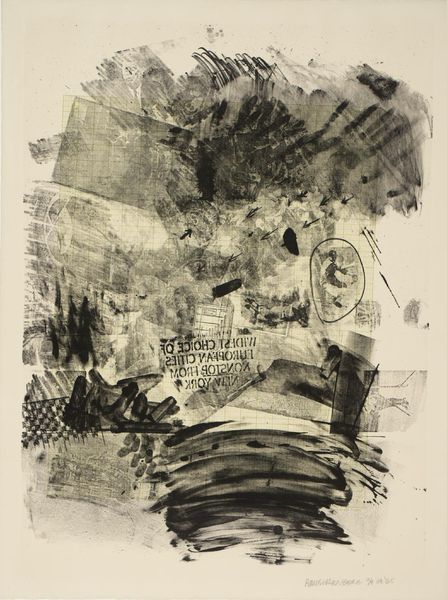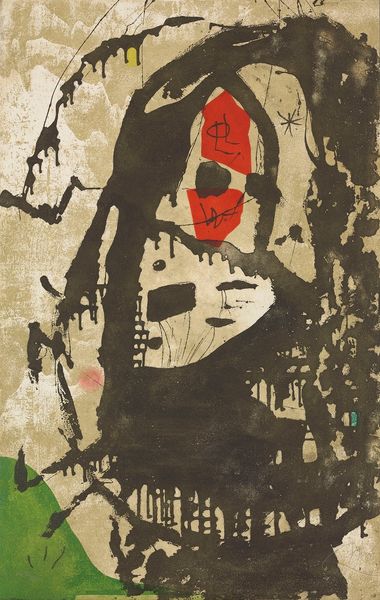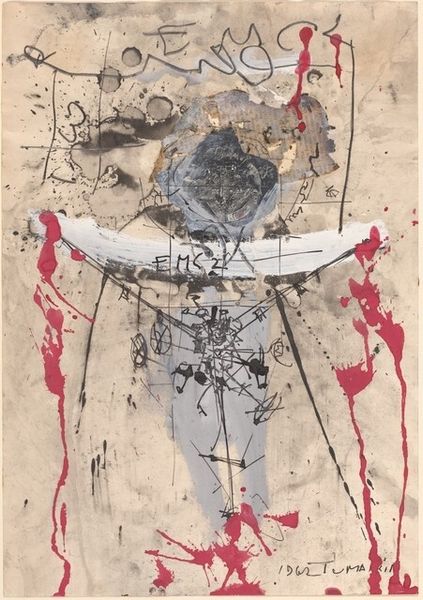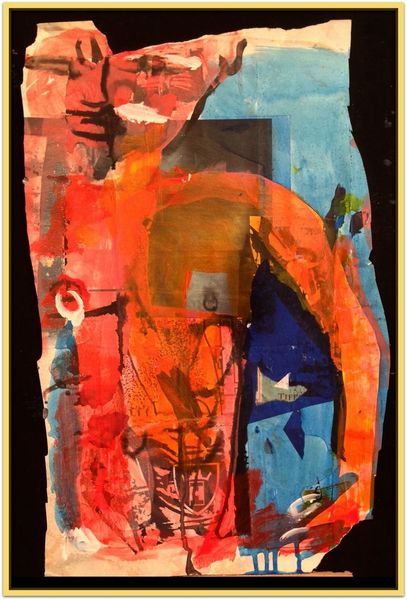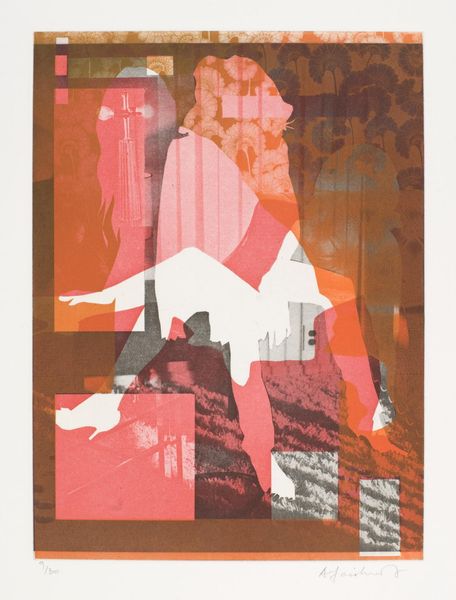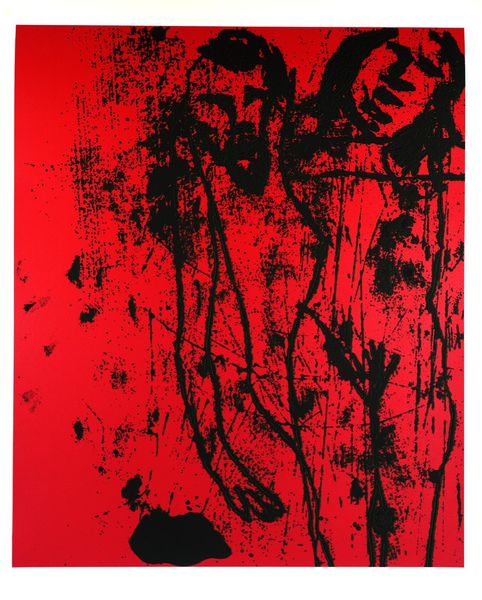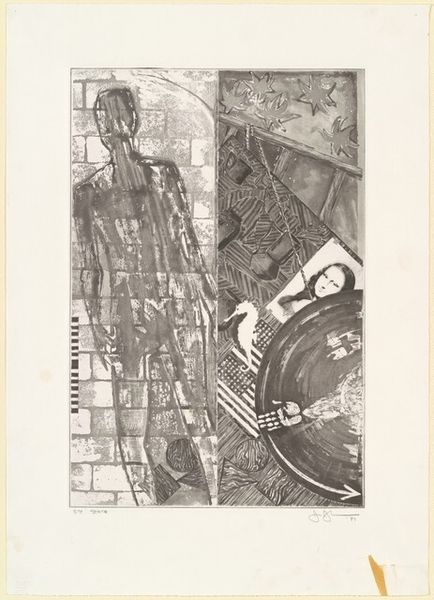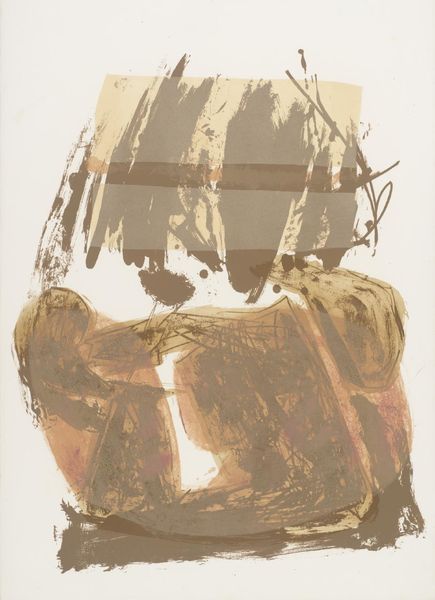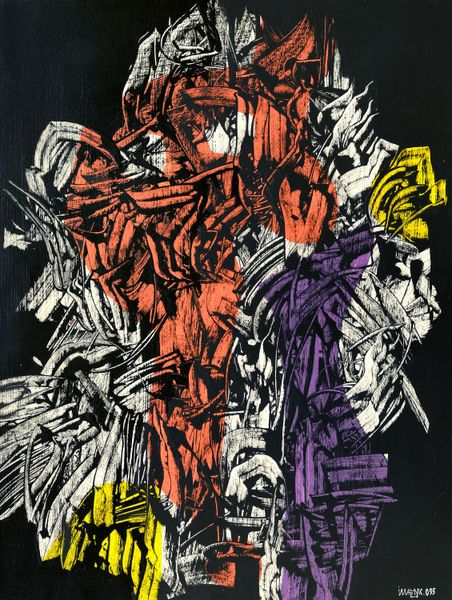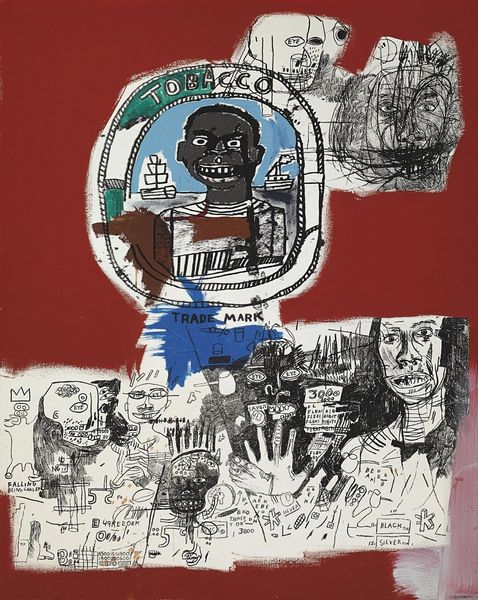
drawing, mixed-media, collage
#
portrait
#
drawing
#
mixed-media
#
collage
#
appropriation
#
figuration
#
oil painting
#
pop-art
Dimensions: sheet: 68.9 × 56.83 cm (27 1/8 × 22 3/8 in.)
Copyright: National Gallery of Art: CC0 1.0
Curator: The immediate impression is quite unsettling, isn’t it? There’s a sense of defacement and distortion that’s hard to ignore. Editor: Yes, it is powerfully disruptive. We’re looking at Dominick Di Meo’s “Untitled” from 1966, a mixed-media collage and drawing. Consider the art world around 1966—what counter-narratives do you suppose Di Meo engages with through this act of artistic appropriation? Curator: Certainly a questioning of idealized representations. This deconstructed portrait feels almost violently opposed to traditional portraiture's glorification of the sitter, challenging notions of beauty and celebrity, almost like a commentary on the way the media both constructs and destroys female images. The bright red background against the obscured figure is starkly unsettling. Editor: Exactly. We should consider Pop Art's own uneasy relationship with consumerism and fame during that time, where, for example, Warhol simultaneously celebrated and critiqued celebrity culture. Curator: This piece could be read as an act of resistance. The newspaper clippings, the fragmented imagery, and the almost brutal mark-making, all convey a sense of unease, possibly reflective of broader anxieties during the '60s. What did these jarring juxtapositions say to contemporary audiences grappling with issues of identity, visibility, and social upheaval? Editor: The layering of materials adds a tactile quality. Collage, drawing—it’s not simply about visual representation. It uses social detritus, ephemera, maybe creating new meaning or challenging the status quo. Consider its placement—how might galleries amplify such challenges, or alternatively, neutralize the political edge, thereby integrating it into established narratives? Curator: It is fascinating how Di Meo transforms something potentially mundane into a charged expression, speaking, perhaps, about the fragmentation of the self in modern society, laying bare anxieties of that period. The work leaves one wondering what he aimed to reveal about the society around him and within him. Editor: Precisely, the artist's process mirrors a historical excavation and asks important questions about who art represents, how it represents, and what power dynamics shape the creation and the public presentation. It asks how viewers shape such power, too. Curator: A lasting and unsettling image with far reaching commentary. Editor: A great artwork through which to explore how social and political realities seep into artistic practices.
Comments
No comments
Be the first to comment and join the conversation on the ultimate creative platform.
